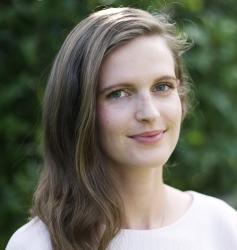At the edge of Reykjavik, something is missing. The drive out to the tip the peninsula on which the city sits is dominated by the modern houses that characterise the contemporary cityscape, and the physical absence of turf houses—a traditional and historic form of architecture in Iceland—is palpable. At the very end of this spit of land, however, on the Grótta lighthouse island, a new art exhibition seeks to evoke this lost presence and bring turf houses back into Icelandic consciousness.
The exhibit “Earth Homing: Reinventing Turf Houses” brings together various disciplines, including the fine arts, music, and academic work, to address the history of turf houses and open a discussion about their potential role in creating a sustainable future. With the theme of turf housing as a starting point, the installations delve into complex topics such as global warming, slavery, and natural disasters.
“It’s about revisiting the past to reinvent the future,” says Annabelle von Girsewald, the show’s curator.

A sustainable future
With the results of global warming being felt around the world, Annabelle sees turf houses—thought of today as an anachronistic form of building, and consigned to history—as a viable form of “green” architecture.
“A turf house is a structure that is part of the earth, built from the earth,” she says, explaining how the material lasts for 100 years, and can withstand harsh weather. “With the correct form of technology, there could be ways to work with turf for the future. That’s what this exhibit is about. I wanted to open up a dialogue about this. Can turf houses be part of a more sustainable future?”
The exhibition maker
Whereas most exhibits consist of pre-existing artworks, Annabelle made sure this installation contains predominantly new pieces, so that she could engage in a collaborative process with everyone involved.
“I see myself as an instigator, as someone who is putting these things together,” she explains. “I like to call myself an ‘exhibition maker’ rather than a curator.” She emphasises that the word “maker” is an active verb, symbolising her active role as a curator.
Annabelle assigned each artist in the exhibit a specific theme related to turf houses. Anna Júlía Friðbjörnsdóttir, for instance, was assigned “kitchen,” while Claudia Hausfeld was assigned “ruins.” Most of the artists created new works specifically for this exhibit.

Darkness and Light
Anna Júlía responded to her assignment with “Where Darkness Meets Light,” in Icelandic, “”Dimmumót, 2018” a work that explores the social lives of the people who lived in turf houses. The piece consists of casts of women’s hands to highlight the physical hardships that the people would undergo in relation to domestic work, as well as the serfdom, or “vistarband,” that took place in turf houses.
Responding to the theme of “voice,” Gunnhildur Hauksdóttir’s work, “Óróaplott/Tremorgraphs“ is based on earthquakes that happened in locations where turf houses once stood. Gunnhildur used the seismic graphs of these earthquakes to create a musical score. The result is a choral piece that will be performed on the opening day of the exhibit in the lighthouse, with an accompanying choreographed dance arrangement.
Steingrímur Eyfjörð was assigned the theme of “contemporary history.” Created in the late ‘90s, Steingrímur’s work confronts the word “Moldarkofinn,” a negative expression related to turf houses that can be roughly translated as “coming out of the mud hut.” He consulted the historian Þorgeir Rúnar Kjartansson (1955-1998) during the making of the work, which consists of photos of turf houses with accompanying drawings.
Examining the roots
The research surrounding the exhibit comes from a wish to treat the topic of turf houses sensitively, due to their association with serfdom as well as the disdainful view that mainland Europe traditionally afforded this form of architecture. Annabelle has been in contact with Guðjón Stefán Kristinsson, a turf-house builder, as well as Professor Sigurjón Baldur Hafsteinsson, who specialises in cultural heritage.
In addition to this research, Annabelle involved academics who will discuss their work in this field throughout the duration of the exhibition. “I am treating them as artists as well,” says Annabelle. “They produce texts, and I see it as quite equal, because academic insight into the topic is an important part of the project.”
“Earth Homing” will continue with exhibitions in Norway and the Faroe Islands, where students from various Nordic countries, and from across disciplines, will participate to learn from the research that has been conducted since the beginning of the project—and to discuss the future. By fusing together different disciplines, Annabelle’s project shows that grass roofs can belong to the future, not just the past.
“Earth Homing: Reinventing Turf Houses” is happening at Grótta from August 8th-September 9th. Find a schedule of events at www.earthhoming.com.
Buy subscriptions, t-shirts and more from our shop right here!




















